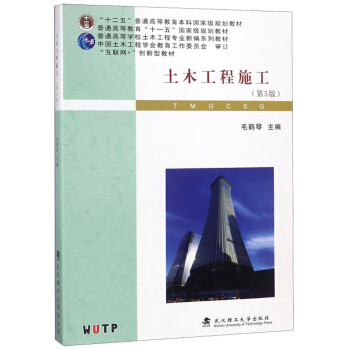岩体各向异性、动态破裂与地震评估
出版时间:2016年3月
出版社:高等教育出版社
- 高等教育出版社
- 9787040443455
- 1版
- 71526
- 0045165885-0
- 16开
- 2016年3月
- 450
- 300
- P315
- 地质学类
- 研究生
◆岩体各向异性,横波分裂、裂隙介质中的三维射线跟踪方法及应用
◆岩体破碎过程的离散元模拟方法、精示地震中岩体胀缩比和内摩擦角
◆岩石动态破裂学分析地震核化和应力重新分布
◆地震评估中震矩和断层测量参数之间的线性回归分析与实倒
◆图像信息统计方法和地震概率相对增量逆向跟踪与实例
◆全地震信息的概率分析与太平洋岛国震灾评估
本书作者分别在各章节中对上述方法作了详尽阐述和公式推演,并给出了应用实例。理论与实践融合贯通。本书适合作为高等院校地球物理和地震学研究生教学课程的参考书,也可供地震领域研究人员借鉴。
Rock Anisotropy, Fracture and Earthquake Assessment
Seismic Wave Propagation in Anisotropic Rocks with
Applications to Defining Fractures in Earth Crust
1.1 Introduction
1.2 Elastic Anisotropy of Crustal Rocks
1.2.1 Anisotropic Symmetry System
1.2.2 Transversely Isotropic Medium
1.2.3 Anisotropy of Fractured Rock
1.3 Plane Wave Propagation in Homogeneous Anisotropic Medium
1.3.1 Phase Velocities of Body Waves in Anisotropic Media
1.3.2 Group Velocities of Body Waves in Anisotropic Media
1.3.3 Body Wave Polarizations
1.4 Reflection and Refraction of Plane Waves at a Planar Boundary between Anisotropic Media
1.4.1 Slowness Surface Method
1.4.2 Reflection and Transmission Coefficients
1.5 Ray Tracing in Anisotropic Heterogeneous Media
1.5.1 Ray Series Method
1.5.2 Body-Wave Polarization
1.5.3 Geometrical Spreading and Ray Amplitudes
1.5.4 Specification of a Source and Ray Synthetic Seismogram
1.5.5 Least-Squares Inverse for Traveltime
1.6 Ray Series Modeling of Seismic Wave Propagation in 3-D Heterogamous Anisotropic Media
1.6.1 The VSP Experiment at Hi Vista and Shear-Wave Splitting Observations
1.6.2 Theory
1.6.3 Traveltime and Amplitude Modeling Results 101
1.7 Observation and Modeling of Fault-zone Fracture Seismic Anisotropy
1.7.1 The Experiment and Data
1.7.2 Seismic Wave Traveltimes in a Heterogeneous Anisotropic Medium
1.7.3 Polarization of Plane Waves in an Aligned Fracture AnisotropicMedium
1.8 Shear Wave Splitting Observations and Implications on Stress Regimes in the Los Angeles Basin, California
1.8.1 Tectonic Significance and Geological Setting
1.8.2 The Data and Method
1.8.3 Implications from Shear Wave Splitting Observations
1.8.4 Ray Tracing
Acknowledgements
References
2 Reproducing the Realistic Compressive-tensile Strength Ratio of Rocks using Discrete Element Model
2.1 Introduction
2.2 A Brief Introduction to the ESyS-Particle
2.2.1 The Equations of Particle Motion
2.2.2 Force-displacement Laws and Calculation of Forces and Torques
2.3 The New Criterion for Bond Breakage
2.3.1 Macroscopic Failure Criterion
2.3.2 Particle Scale Failure Criterion in DEM Model
2.3.3 A New Failure Criterion for DEM
2.4 Calibration Procedures 152
2.4.1 Input Microscopic Parameters and the Desired Macroscopic Parameters
2.4.2 Sample Generation
2.4.3 Numerical Set-ups
2.5 Parametric Studies
2.5.1 Elastic Parameters
2.5.2 Fracture Parameters
2.6 Discussions and Conclusions
Acknowledgements
References
3 Rock Fracture under Static and Dynamic Stress
3.1 Introduction
3.2 Stress Intensity Factor and Stress Field
3.3 Coulomb-Mohr Failure Criterion
3.4 Energy Release and J-integral
3.4.1 Energy Release Rate
3.4.2 J-integral
3.5 Crack Growth
3.5.1 Maximum Hoop Stress Theory
3.5.2 Strain Energy Density Theory
3.6 Crack Growth under Dynamic Loading
3.6.1 Dynamic Crack Propagation in Rock
3.7 Cohesive Model in Rock Fracture
3.7.1 Stress Change in Slip-weakening Model
3.7.2 Relationship between Energy Release Rate G and the Parameter in Slip-weakening Model
3.8 Numeric Method for Fracture Mechanics
3.8.1 Singularity Element Method
3.8.2 Extended Finite Element Method
3.9 Discussion
Acknowledgements
References
4 Multiple Linear Regression Analyses on the Relationships among Magnitude, Rupture Length, Rupture Width, Rupture Area, and Surface Displacement
4.1 Introduction
4.2 Data
4.3 Linear Models and Computational Approach
4.4 Results
4.4.1 Simple Linear Regression Results
4.4.2 Multiple Linear Regression Results
4.4.3 Model Diagnostics
4.4.4 Comparison between Multiple Models and Simple Models
4.4.5 Model Fits on the Slip Factors
4.5 Concluding Remarks
Acknowledgements
References
5 PI Algorithm Applie















